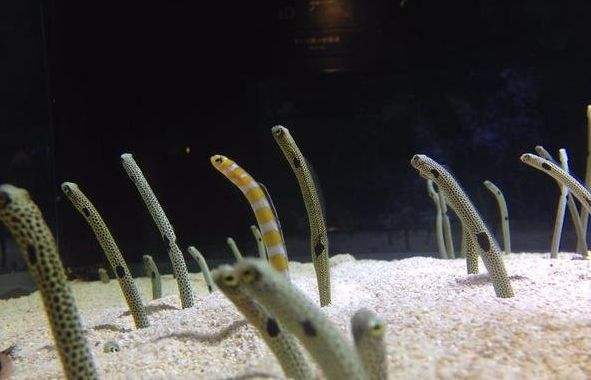Heteroconger eels live in groups of hundreds (sometimes thousands) of individuals. The largest males usually live in the center of the group, positioning themselves in the best spots to build a home and get food. When they are not hiding, these fish sway like leaves of seaweed, hence the name "garden".

The Heteroconger eel spends almost its entire life digging a hole for itself. To dig the hole, the Heteroconger eel tightens its muscles to make its tail very stiff and pushes it into the sandy seabed. They use the mucus on their bodies to cover the sand wall and glue the sand grains together to create a cement-like substance to prevent the cave from collapsing.
To eat, the Heteroconger eel will extend most of its body out of the cave and swing back and forth in the opposite direction of the water flow, and catch plankton and eggs from the water flowing through. Usually, a Heteroconger eel can eat more than 600 plankton in one meal. Because of this, Heteroconger eels in an area usually face the same direction, that is, the opposite direction of the water flow.
Each Heteroconger eel has its own cave, and there are about 15 living in an area of one square meter. Even when laying eggs, they rarely leave the cave. It is a gregarious animal with a shy and timid temperament. It hides in the sand with only the front half of its body exposed. If it finds something unusual, it will immediately hide in the cave, and it may even die from excessive stress. It will not be until a few minutes later that it will cautiously stick its head out, open its huge eyes and look around. When it is sure that it is safe, it will slowly stretch its body out and continue to move. Therefore, although many people go diving to watch the strange sight of a whole group of eels in the sea, they can generally only watch from a distance and cannot get too close. .
In their view, the entire seabed is their big family, and they can freely shuttle back and forth between the homes of other Heteroconger eels. Their holes can be up to 45 centimeters long and can connect the homes of dozens of Heteroconger eels. They can be called "earthworms in the sea."
Currently, the population is stable and is not seriously threatened. The IUCN Red List has not evaluated the population status of the Heteroconger eel.
Protect wildlife and stop eating game.
Maintaining ecological balance is everyone's responsibility!